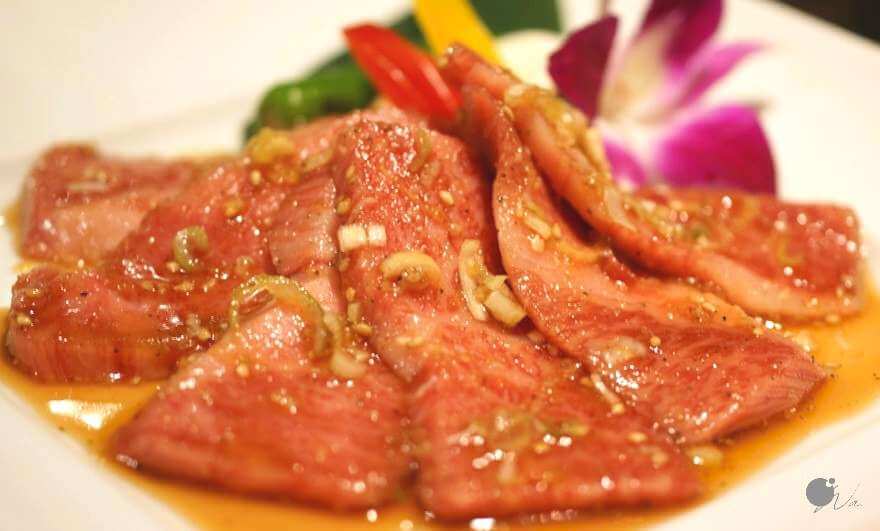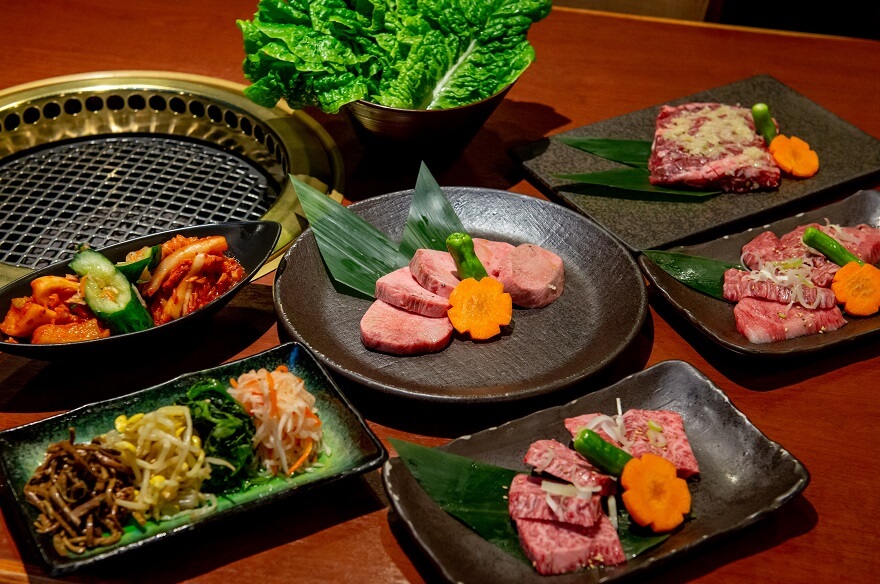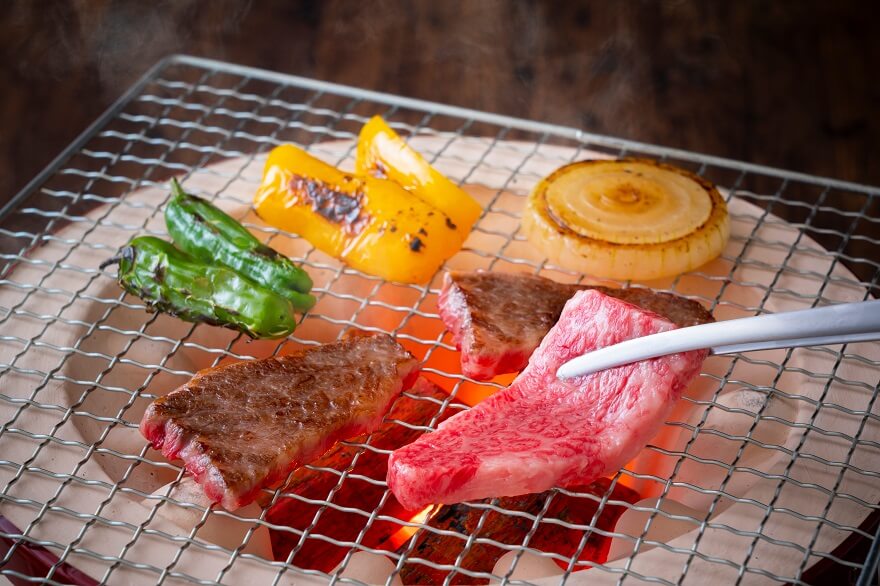At Yakiniku restaurants, there are two types of order: Tampin (単品) and Tabehōdai (食べ放題).
So what’s the difference between these two styles of ordering?
Let’s explore to make it easier for you to choose when dining for yakiniku in Japan.
Tampin-style Yakiniku Restaurant

The Tampin-style ordering system (単品) means that you can order whatever you like, pay for what you order, just like you would a normal meal.
In Japan, usually high-end Yakiniku restaurants or special quality Yakiniku restaurants only have Tampin-style ordering system.
The merit of Tampin-style ordering system
- High quality meat, evenly delicious
- Order freely, the menu is not limited
- Usually has a luxurious space, suitable for receiving guests or dating
The demerit of Tampin-style ordering system
- Difficult to control the amount to be paid, especially in case of ordering many dishes
- Be afraid to try unfamiliar dishes and tend to order known dishes
Tabehōdai-style Yakiniku Restaurant

The Tabehōdai-style ordering system (食べ放題) means you can order all you want from a fixed menu for a fixed price.
It’s not hard to find Yakiniku with TabehōdTa-style in Japan.
GYUKAKU, YAKINIKU KING, ANRAKUTEI… most of the famous Yakiniku chains in Japan have a Tabehōdai-style ordering system.
The merit of Tabehōdai-style ordering system
- Don’t worry about over budget
- The menu is extensive, from meat, vegetables, seafood to desserts
- Don’t be afraid to try strange dishes because you only need to pay a fixed amount anyway
- Usually has a lively space, suitable for dining with family and friends
The demerit of Tabehōdai-style ordering system
- Meat quality is not so excellent
- The menu is limited so sometimes you won’t be able to order your favorite dishes
- Easy to overeat
Notes when eating Yakiniku Tabehōdai in Japan

Depending on the restaurant system, there will be many different Tabehōdai packages
Yakiniku restaurants in Japan often have many packages of Tabehōdai with different prices.
Tabehōdai packages usually range in price from 3,000~5,000 yen, the higher the price, the more extensive the menu, even including Wagyū Japanese beef.
In addition, most Tabehōdai restaurants have special prices for the elderly and children to encourage the whole family of 3 generations to go out to eat together.
Note that everyone in the same group must order the same Tabehōdai package.
For example: A and B go out to eat Tabehōdai Yakiniku.
(OK) A and B choose the Tabehōdai Premium package.
(NG) A choose the Tabehōdapackage, B choose the Tabehōdai Standard.
There is a time limit for meals
Depending on the restaurant system, the meal time of the Tabehōdai package will vary, usually from about 90~120 minutes.
If you sit beyond this time, you may be charged an additional fee. You can check the menu or confirm with the staff in case you plan to sit longer than the specified meal time.
Last-order
Last-order is usually closed 10~30 minutes in advance.
In recent years, ordering by tablet is very popular at Yakiniku restaurants in Japan. When the time for the last-order is near, the tablet will notify you and let you know the last order.
In case the restaurant does not apply ordering by tablet, the staff will come at the time of last-order to ask if you want to order anything more and close the payment.
You can ask the staff to prepare small servings
A common problem when going out to eat Tabehōdai Yakiniku is leaving food behind due to ordering too many dishes.
It’s perfectly reasonable to order a variety of dishes when going out to eat Tabehōdai, but to avoid leaving food waste or trying to eat it all affects your stomach, you can ask the staff prepares smaller servings than usual.
Can order single dishes that are not on the Tabehōdai menu
For Yakiniku restaurants that have both Tabehōdai and Tampin ordering system, in case you want to eat something that Tabehōdai menu does not have, you can order additional Tampin menu items.
At this time, the price will be the total price of the Tabehōdai package plus the price of the extra order.
Conclusion
So now you understand the difference between Tampin style and Tabehōdai style Yakiniku, right?
The Tampin-style restaurant operates on an à la carte basis, where you pay for what you order.
The Tabehōdai-style restaurant is the “All you can eat” format, where you can enjoy unlimited servings of all the dishes on the menu for a fixed price.
Each type of ordering system has certain pluses and minuses, depending on the person you go with and the budget of that day, you should choose the most suitable restaurant.


Comment